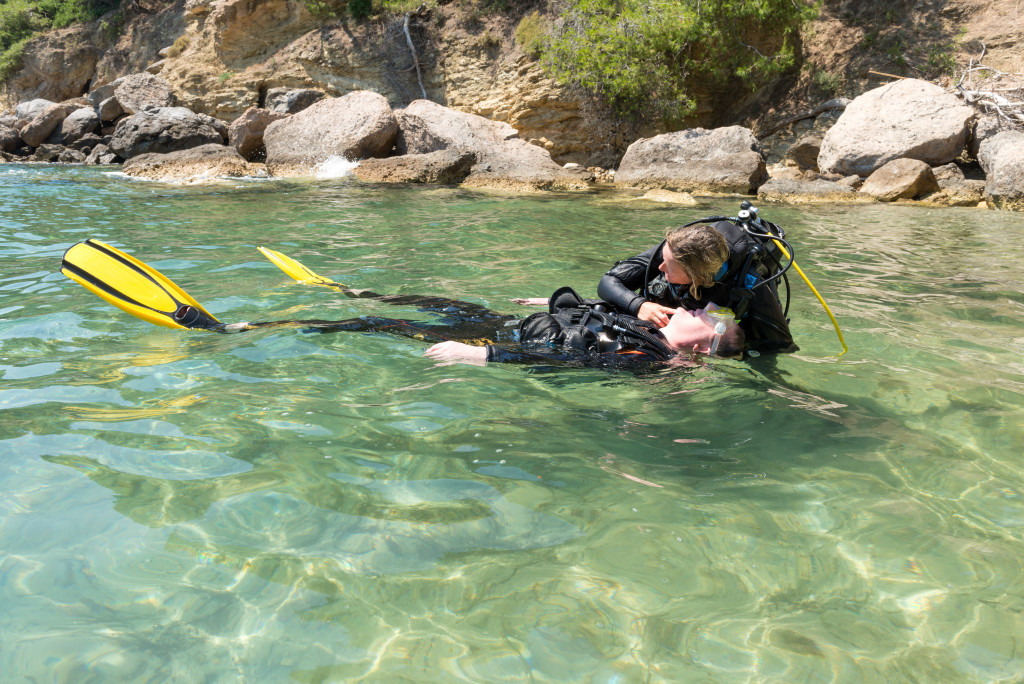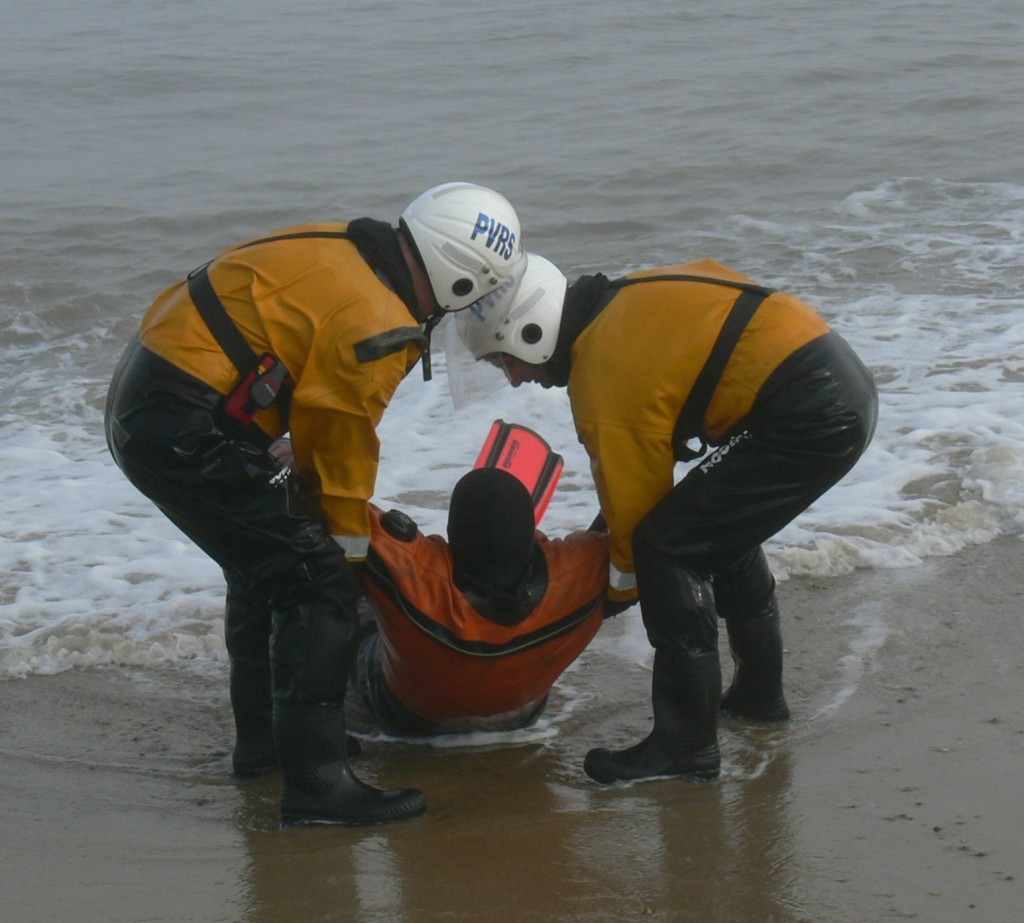By guest blogger Yvonne Press
Maybe you’re a newly certified Open Water diver, or maybe you’ve been diving for awhile but haven’t pursued another certification yet. What’s next? More diving and an Advanced Open Water course are a great start, but after you’ve achieved those goals, the PADI Rescue Diver course is one of the most valuable certifications you can pursue. But how do you know when you’re ready to use your dive knowledge to help others, and what should you expect?
Why Rescue Diver?
First things first: You’re never too inexperienced to help another diver, which is why the OW course already includes rescue-related skills, such as dealing with out-of-air situations, cramp removal and towing tired divers on the surface. As your own experience grows, so too does your ability to help others. Expect to be challenged, both physically and psychologically, during the Rescue course. And as you meet that challenge, you’ll find your confidence underwater (on land and) increases every single day.
So, when should you start? Many divers follow the classic path of becoming an Open Water Diver, then doing their Advanced course before signing up to become Rescue Divers. But do you really need to be comfortable enough to dive to 100 feet (30 m) before being allowed to help another diver?
PADI Platinum Course Director Steve Prior says no: “It’s a bit of a common misconception that divers have to complete their Advanced course before being able to become Rescue Divers,” he says. “Just think about it — many people have no intention of ever diving deep, but they would be perfectly able to help, say, an underwater photographer who is in trouble in 40 feet (12 m).
“Sadly, many dive schools seem to have made it a requirement to complete the full Advanced course before moving on to Rescue training which actually builds a barrier to further training as opposed to encouraging it.”
Which agency?
Taking a look at a range of dive-training agencies, Prior’s view is backed up by the listed prerequisites: PADI requires students to hold the Adventure Diver rating, which requires a minimum of seven dives — four for the OW certification and three Adventure dives, one of which needs to be underwater navigation. Looking at the agency’s Rescue curriculum, this makes perfect sense as students will be required to perform search patters and look for a missing diver.
SSI treats “Stress & Rescue” as a specialty course, which means students can start right after their open-water certification. The main difference from the PADI curriculum here is a bigger emphasis on stress, its effects on the diver, and how quickly stressful situations can turn into emergencies.

SDI, on the other hand, offers potential Rescue Divers two ways of qualifying for the course: like PADI, a qualified SDI Adventure Diver can participate, but an Open Water Diver may also take part, provided they have logged 40 open-water dives.
All agencies require a CPR and first-aid qualification, and some also recommend oxygen-provider certifications, all of which can usually be completed right before the actual Rescue Diver course.
Determining the right time to take the next step will always be an individual decision. However, a “sooner rather than later” approach might be the answer for most: divers in the Rescue Course will learn and practice numerous new skills, which are useful in many situations outside diving as well. Being able to practice them over a number of days grows confidence and inevitably leaves divers feeling more capable and in control of their dives. So, what are you waiting for?


